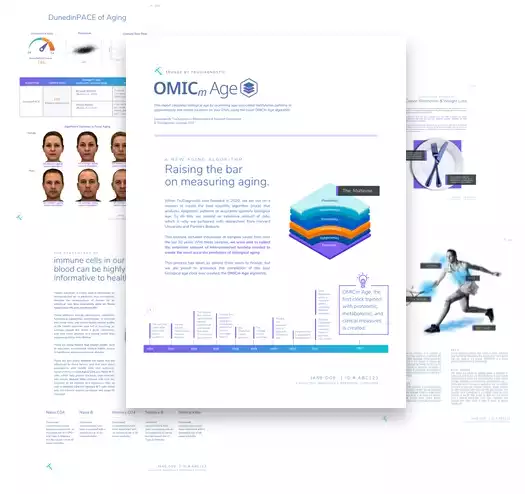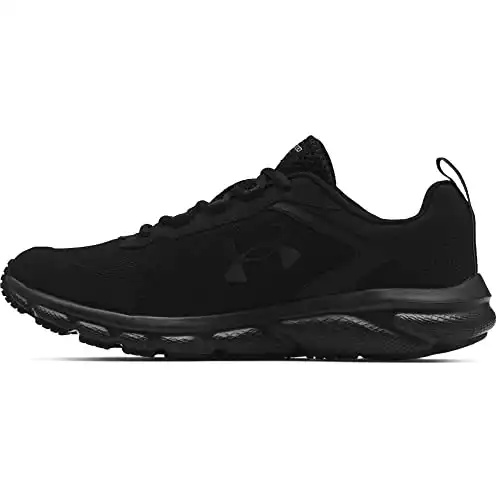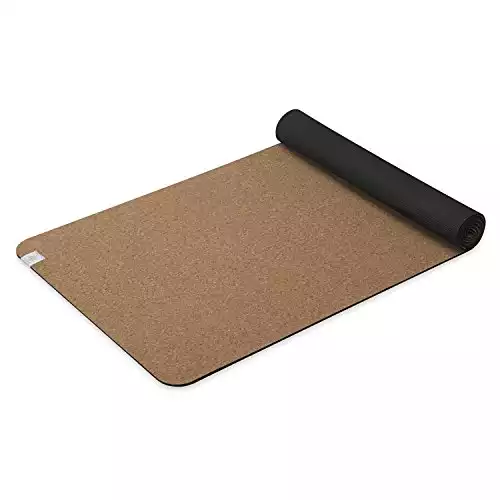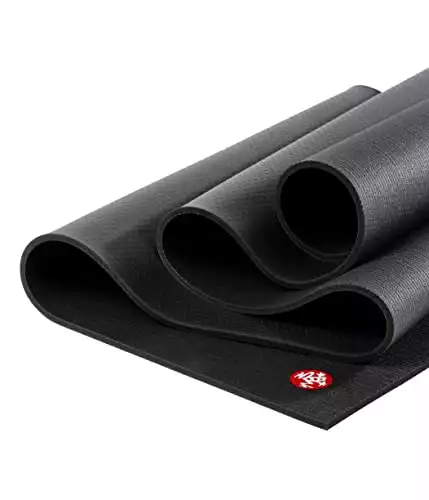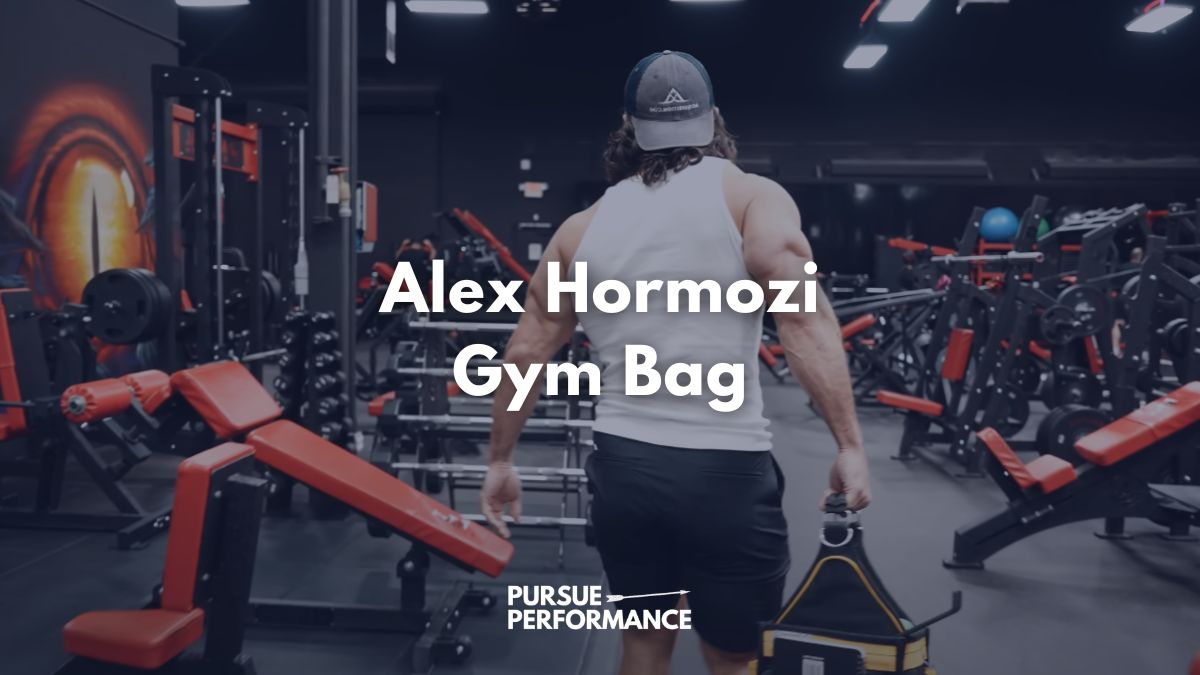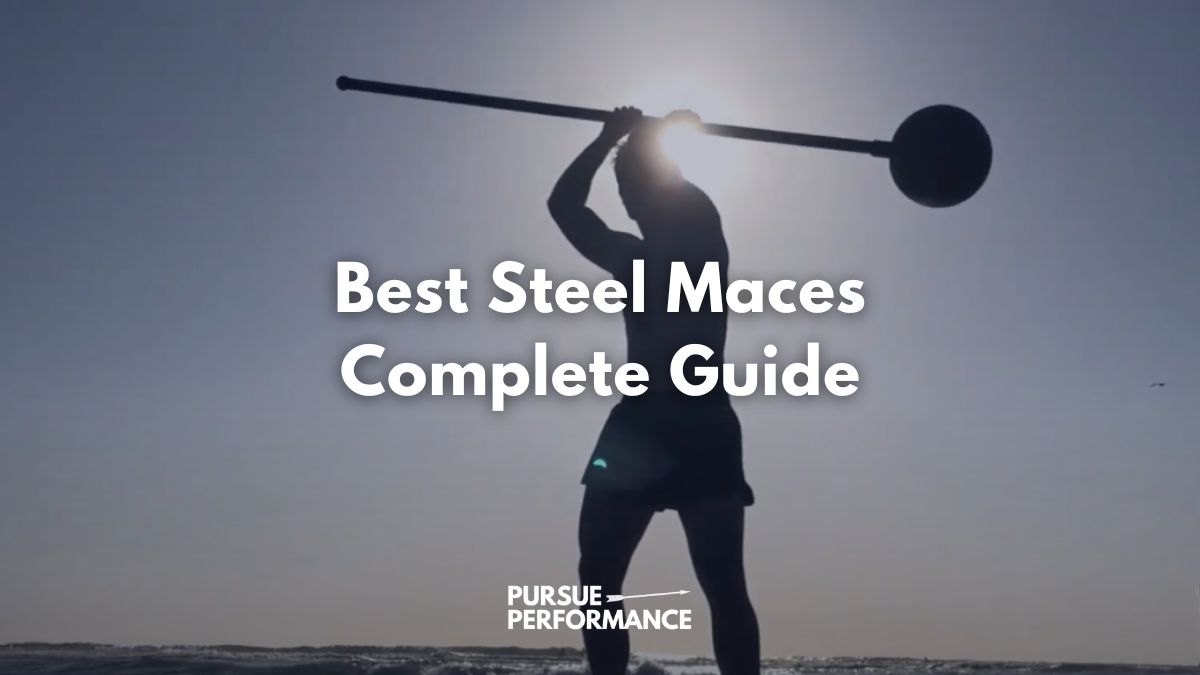The best sport for longevity is a choice between tennis, cycling, and swimming.
It isn’t just about adding years to life, but more importantly, adding life to years.
With a range of sports offering varied benefits, the ideal choice often balances physical health, mental well-being, and social engagement.
In this post, we will explore some of the best sports for longevity, supported by personal experiences, expert advice, and scientific studies.
Top Picks
Walking shoes: Under Armour Men’s Charged Assert
Yoga mat: Manduka PRO
Why Exercise for Longevity Matters
Regular physical activity is a crucial factor in maintaining health and extending life.
It has been proven to reduce the risk of chronic diseases, such as heart disease, diabetes, and certain cancers.
Exercise improves mental health, cognitive function, and quality of life, especially as one ages.
Related: Best Tib Bars To Bulletproof Your Legs
The Science Behind Exercise and Longevity
Research has consistently shown that physical activity can lead to a longer life.
A study published in the “Journal of the American Medical Association” found that individuals who engage in regular physical activity had a significantly lower risk of mortality compared to those who led a sedentary lifestyle.
These benefits were observed across various types of physical activity, including both moderate and vigorous exercises.
Related: Best Backward Walking Treadmill for a Low-Impact Workout
The Role of Exercise in Aging
As we age, our bodies naturally begin to lose muscle mass and bone density, and the risk of chronic diseases increases.
Regular exercise helps to combat these age-related changes by strengthening muscles and bones, boosting metabolism, and improving heart and brain health.
Things like grip strength have also been associated with improved longevity.
- Recommended by Bryan Johnson (Blueprint)
- Discover your biological age
- 75+ epigenetic biomarkers
We did a round-up of the best grip strength testers to help you regularly track this important health marker.
It’s not just about living longer but also about maintaining independence and the quality of life in older age.
Related: Bryan Johnson Red Light Therapy: Recommendations and Benefits
The Proven Winners: Walking, Strength Training, and More
1. The Power of Walking

Walking, particularly brisk walking, is one of the simplest and most effective exercises for longevity.
Maybe not the sport you had in mind, but it’s low impact, which makes it suitable for all ages and fitness levels.
Regular walking can improve cardiovascular health, enhance muscular endurance, and boost mental well-being.
How Much Walking?
The Centers for Disease Control and Prevention (CDC) recommends at least 150 minutes of moderate-intensity aerobic activity, like brisk walking, per week for adults.
This can be broken down into manageable sessions; for example, a 30-minute walk five times a week.
Related: Andrew Huberman Sauna: Complete Guide
2. Strength Training: Not Just for Bodybuilders
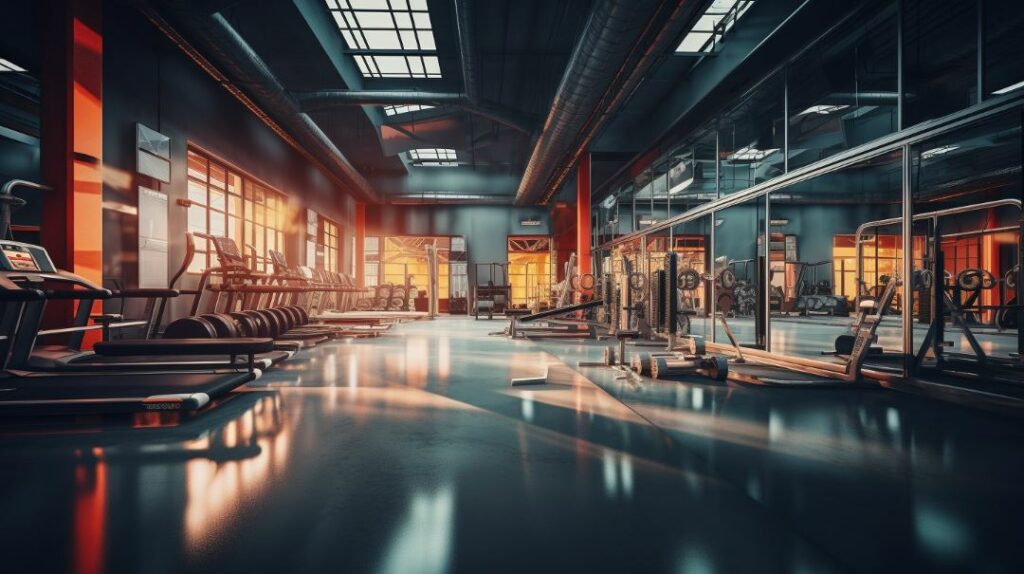
Strength training goes way beyond just building muscle.
And you might not think of strength training as a sport.
I promise we have a comprehensive list of sports for longevity below!
Still, it plays a crucial role in combating muscle loss associated with aging, improving joint function, and increasing bone density, which helps prevent osteoporosis.
As you get older, maintaining muscle mass helps to protect your posture, resilience, and energy levels.
Guidelines for Beginners:
- Start with Light Weights: Begin with weights that you can lift comfortably for 8 to 12 repetitions. The last few reps should feel challenging but doable.
- Focus on Major Muscle Groups: Include exercises that target your legs, hips, back, abdomen, chest, shoulders, and arms.
- Frequency: Aim for at least two non-consecutive days per week to allow muscles time to recover and grow.
- Gradual Progression: Increase the weight, number of sets, or types of exercises as you get stronger.
Sample Beginner Strength Training Routine
| Exercise | Muscle Group Targeted | Sets | Repetitions |
|---|---|---|---|
| Squats | Legs, Hips | 2-3 | 8-12 |
| Chest Press | Chest, Arms | 2-3 | 8-12 |
| Deadlifts | Back, Legs, Core | 2-3 | 8-12 |
| Overhead Press | Shoulders, Arms | 2-3 | 8-12 |
| Planks | Core | 2-3 | Hold for 30-60 seconds |
Remember, proper form is crucial.
Consulting a fitness professional when starting out can ensure that you’re performing exercises correctly.
3. Balancing Exercise with Tai Chi and Yoga
In the pursuit of a life full of vitality and longevity, incorporating a variety of exercises is crucial.
Beyond the typical strength and cardiovascular workouts, adding disciplines like Tai Chi and Yoga can offer a more holistic approach.
These practices not only enhance physical health but also enrich mental and emotional well-being, making them an integral part of a well-rounded fitness regimen.
The Calming Power of Tai Chi
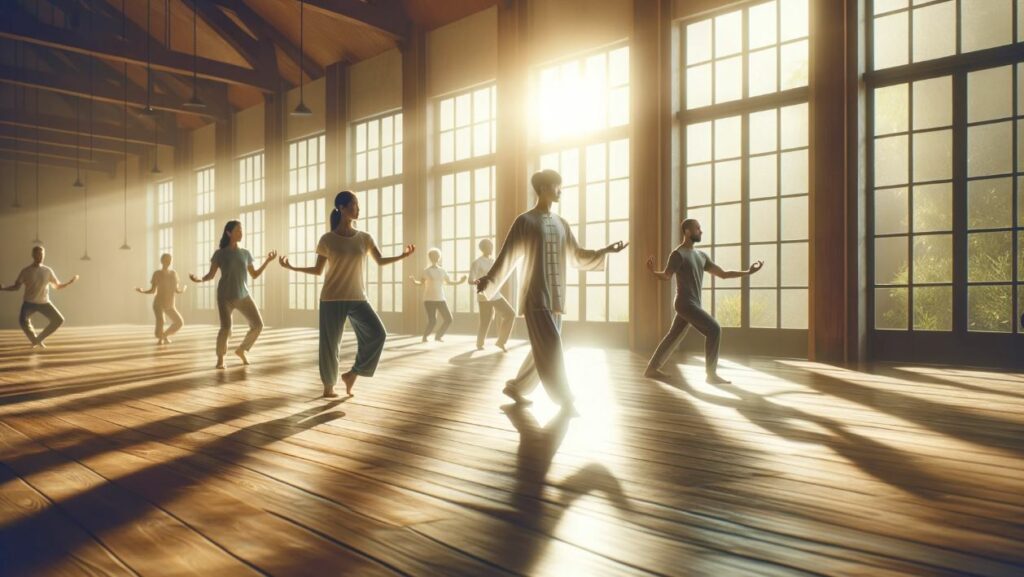
Tai Chi, an art embracing mind, body, and spirit, originates from ancient China.
Known for its serene and fluid movements, Tai Chi is often referred to as “meditation in motion.”
It’s not just an exercise; it’s a philosophy for harmonizing the body and mind.
Embracing Tai Chi’s Gentle Flow
For those looking to embark on a Tai Chi journey, the path is welcoming to all.
Beginners might start by searching for classes in their local community centers or online platforms.
Focusing on the basic postures and the art of controlled breathing forms the foundation of Tai Chi practice.
Just 10-15 minutes a day can bring about a noticeable improvement in balance and tranquility.
The myriad health benefits of Tai Chi have been celebrated in various studies.
It’s shown to significantly improve balance and motor control, helping to prevent falls, a significant concern in older adults.
Yoga: A Journey of Strength, Flexibility, and Mindfulness
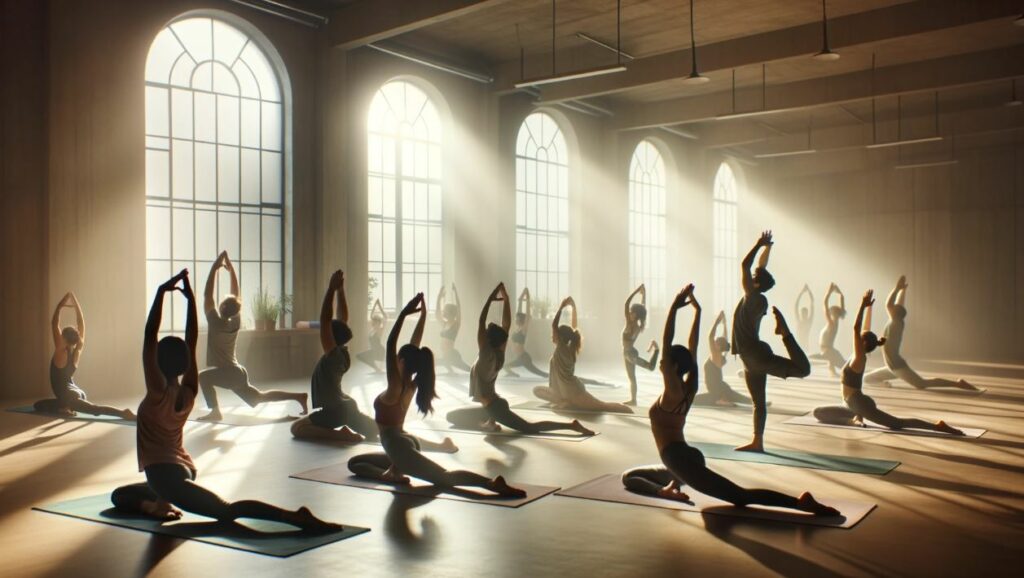
Yoga, much like Tai Chi, is more than just physical postures; it’s a complete system for overall health and wellness.
Starting with Yoga
Beginning a yoga practice is accessible to all, regardless of fitness level.
Newcomers might find styles like Hatha or Iyengar Yoga more accommodating, as these focus on holding poses longer, aiding in muscle strength and flexibility.
Many yoga studios, community centers, and online resources offer classes specifically tailored for beginners.
Basic poses such as the Mountain Pose, Downward-Facing Dog, and Warrior I not only build the foundation for a stronger body but also help in cultivating mental focus and balance.
The benefits of Yoga extend well beyond mere physical well-being.
Regular practice has been known to significantly improve flexibility and balance, crucial for preventing injuries as we age.
- Sauna/Heat-safe
- High grip
- Durable
The focused breathing in Yoga can enhance lung capacity and respiratory function, and the practice has been recognized for its effectiveness in managing and reducing chronic pain.
This is particularly useful in areas like the lower back, with issues like psoas trigger points.
- Heat-resistant (ideal for sauna & hot yoga)
- Industry-leading durability
- Chemical-free construction
Related: Bryan Johnson Air Purifier: Recommendations and Rationale
Factoring in Enjoyment and Risks
Choosing an exercise you enjoy is key to maintaining consistency. Enjoyable activities lead to higher levels of sustained engagement, which is essential for reaping long-term health benefits.
Activities for Enjoyment and Longevity
- Swimming: Great for all-round fitness, easy on the joints, and suitable for all ages.
- Cycling: Both outdoor and stationary cycling are effective for cardiovascular health and lower body strength.
- Group Sports: Activities like soccer, basketball, and volleyball provide cardiovascular benefits, improve coordination, and offer social interaction, which is also crucial for mental health.
The Scientific Perspective: How Sports Impact Life Expectancy
Engaging in sports not only improves quality of life but also significantly impacts life expectancy.
According to a recent study, individuals who regularly participate in specific sports activities tend to have a longer life expectancy compared to those who are sedentary.
Life Expectancy Gains from Different Sports
| Sport | Life Expectancy Gain |
|---|---|
| Tennis | 9.7 years |
| Badminton | 6.2 years |
| Soccer | 4.7 years |
| Cycling | 3.7 years |
| Swimming | 3.4 years |
| Jogging | 3.2 years |
| Calisthenics | 3.1 years |
| Health Club Activities | 1.5 years |
Another meta-study, compiled a list of life expectancy gains or losses from various sports and physical activities.
| Type of Sports | Reduction/Increase in Life Expectancy (years) |
|---|---|
| Endurance sports (college rowers from Harvard and Yale) | +6.3 |
| Endurance sports (long distance running, cross-country skiing) | +5.7 |
| Endurance sports (cross-country skiing) | +2.8 to +4.3 |
| Endurance sports (Tour de France cyclists) | +8.0 |
| Power sports (throwing sports, wrestling, weight lifting, boxing) | +1.6 |
| Team sports (ice hockey, soccer, basketball, other outdoor sports) | +4.0 |
| Team sports (baseball) | −5.0 |
| Team sports (baseball) | +4 to +5 |
| Team sports (German international soccer players) | −1.9 J. (+0.6 to −3.2) |
| Various sports disciplines | −0.38 |
| Various sports disciplines | +1.03 |
Final Takeaways: Smart Exercise for Longevity
To maximize the benefits of physical activity for longevity:
- Prioritize Activities You Enjoy: Adherence to an exercise regimen is more likely if the activity is enjoyable.
- Incorporate a Variety: Include aerobic, strength, balance, and flexibility exercises in your routine.
- Understand Your Body’s Needs: Adjust your fitness routine according to your age, health status, and fitness level.
- Balance Exercise with Nutrition and Rest: Healthy eating and adequate rest are as important as exercise for longevity.
Exercise should be a consistent, enjoyable part of life. It’s never too late to start, and the benefits extend far beyond just adding years to life — it enriches those years with health, vitality, and happiness.
FAQ
What is the Best Time of Day to Exercise for Longevity?
Some studies suggest that morning exercise might have additional benefits, such as improved energy levels and metabolism.
How Much Exercise Do I Really Need for Longevity?
According to the World Health Organization, adults should aim for at least 150 minutes of moderate-intensity aerobic physical activity throughout the week, or at least 75 minutes of vigorous-intensity aerobic physical activity, along with muscle-strengthening activities on 2 or more days a week. More can be beneficial, but even small amounts of physical activity are better than none.
Can Exercise Offset a Sedentary Lifestyle?
Regular exercise can partially offset the risks associated with a sedentary lifestyle, but it’s still important to minimize prolonged periods of inactivity. Breaking up long periods of sitting with short activity breaks can also help reduce the risks of a sedentary lifestyle.
Is It Ever Too Late to Start Exercising for Longevity?
No, it’s never too late to start. Exercise benefits individuals of all ages, and the health advantages can be significant even if you start exercising later in life. Older adults should focus on activities that improve strength, balance, flexibility, and moderate aerobic activities.
How Can I Stay Motivated to Exercise Regularly?
Staying motivated involves:
- Setting realistic, achievable goals.
- Choosing activities you enjoy.
- Mixing up your routine to keep it interesting.
- Tracking your progress.
- Seeking support from friends, family, or exercise groups.


